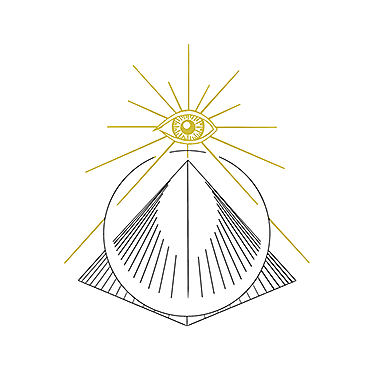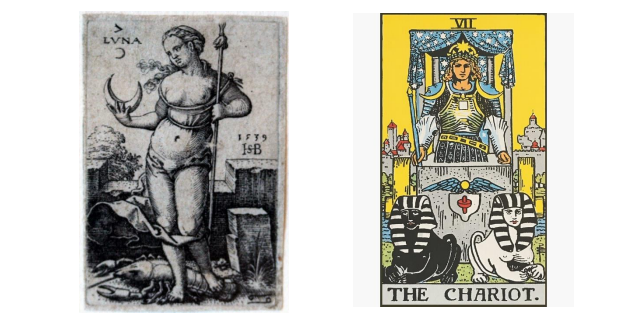
Finding true freedom
Among the conceptual victims of abuse in the world of ideas of mankind, freedom certainly ranks right at the top next to the eternal front-runners love and truth. The old venerable lady liberty has had to serve for so many things! When the audience of German entertainer Marius Müller-Westernhagen fervently sings his hymn “Freedom!” from thousands of throats, so that entire stadiums tremble, I am sure that no two souls in the stadium understand the same thing by this term. Just like truth, freedom is a completely individual value, and psychotherapy can only be truly effective if we find out what the patient imagines his or her individual freedom to be.
As we have come to understand, freedom is not automatically the result of psychoanalytic or general psychotherapeutic work. There is this idea that we only have to work through all traumas, injuries, misunderstandings and illusions one after the other, that we will then eventually be free of them and no longer suffer. This idea is not entirely wrong. The error in thinking lies in the fact that freedom is not an end in itself; it does not exist as a value in itself, except in the metaphysical sense. In terms of religious philosophy, the person who is awakened in God attains the highest possible freedom. Jesus of Nazareth called this freedom the kingdom of heaven, while Buddha spoke of enlightenment, which occurs when we have freed ourselves from the eternal cycle of death and rebirth through self-recognition. Yet the historical Buddha Siddhartha Gautama in his younger years had everything that most Westerners imagine freedom to be: No obligations (except to be a reigning prince or king someday), all the money in the world, health, youthfulness, beauty, absence of sickness, suffering and death, a palace as home, servants to fulfill every wish, and much more.
Jesus had loving parents, was already so gifted at the age of twelve that he impressed the wise old men in the temple and would certainly have had very good cards in any worldly career. But his soul purpose was of course to express Christ consciousness, just as Siddhartha found that he had to be the Buddha in order to fulfill his life purpose.
And this is where we often face a major challenge in psychotherapy as well as coaching: the misconception that freedom is something that can be attained in the outside world persists and is subtly woven into people’s conscious and unconscious. The idea that freedom is realized internally and expressed externally the moment one commits oneself to a goal and purpose in life is foreign to many people; at least, professionally we therapists mainly meet people to whom it is foreign. Those to whom this idea is familiar need us less often.
The first idea that a patient or client often has of freedom is to get rid of what has made him sick. There is also a hit list here, on which gainful employment is at the top, followed immediately by family members, i.e. parents, siblings and spouses or life partners, rarely also children. As the goal of treatment and expression of the highest possible freedom, we are then often presented with what Elke and I have come to call “the dream of perpetual RV (motorhome) freedom,” that is, an idea of permanent vacation like the famous Marlboro Man. The wide West beckons with its campfires and prairies, with sunsets that become more beautiful every day, endless roads through endless expanses, the smell of freedom on our way to dream beaches on dream coasts, and Johnny Walker is our best friend, no stress, no appointments, no other beer, as it says in the advertisement of a well-known German brewery. There is only one problem: Our unlived life goes along on the trip and sits in the camper right next to us. At some point, this shoe starts to pinch and we unconsciously stage dramas again that bring us back to the reality of our soul needs.
What patients and therapists alike often do not consider is that not only suppressed fantasies and needs from the libidinal realm lead to complexes and neuroses, but also suppressed psychological needs that belong to the realm of higher ideals and values. This is probably the core of the historical conflict between Sigmund Freud and Carl Gustav Jung and the truth may lie, as always, in the middle: It is unhealthy to suppress one’s sexual needs, but it can be even more unhealthy to suppress one’s “divine” needs, not to know one’s highest life expression, not to have fully developed one’s potential, not to have lived one’s true life, not to have expressed the music of one’s soul, as Leo Tolstoy described it, mutatis mutandis, in his story “The Death of Ivan Ilyich”.
So, if we have stress in our job and family, it may not be the right job and we may have an unrealistic view of our family. It may also be the right profession, but we don’t have a vision for our life and ourselves; and we just function more or less uninspired in that profession instead of using it as a platform for inspired action. When we don’t have a vision for our life and ourselves, don’t know the music of our soul, we tend to give power over ourselves to external circumstances and expect things from family and profession that we should bring to family and profession, instead of turning away disappointed because family and profession don’t give us what we had hoped for: happiness, wealth, fulfillment, realization.
But we can only feel happy, rich, fulfilled and realized if we know who we are and what we are here for, in this life, on this planet, in this body, in this family, in this profession, in this society, in this country, in this culture. What is our task, what are our specific abilities, what are we particularly good at?
What can we do for hours without getting too tired, what gives us energy; what takes energy away, what has always made our eyes light up, what has always excited us, what is the highest and greatest thing of all for us (after living out our RV dream and realizing that freedom in the outside world eventually reaches its limits)?
Once we have answered these questions, we can look at what we are currently doing to have more of this Most High and Most Great in our lives and what is preventing us from doing more to push back what is causing us stress and get what makes us happy into our lives. At this point Freud with his psychoanalysis can then again be very useful to us. The analysis helps us to find out which childhood experiences and imprints or other influences, if any, lead to the fact that we cannot develop our highest potential. With one of the further developments of psychoanalysis, Gestalt therapy, we can enter into an inner dialogue with parts of ourselves that want to be healed or realized.
Breath therapy can help us get blocked energies flowing, as can body psychotherapy. In some countries, substance-assisted therapy is being legalized, in which healing is initiated with the help of MDMA, LSD and other psychotropic substances, with amazing success. In general, we should always make sure that psychotherapy or coaching does not remain purely mental. In the last article of this series, I presented the four principles of holistic medicine. According to these, we must always include body, soul and spirit in psychotherapy. We may look at the aspect of physical exercise and nutrition and whether there is a spiritual life worth mentioning, i.e. lived spirituality, occupation with art and culture, literature, drama, theater, film, music and other cultural assets or whether Instagram is the only “cultural everyday companion” besides job and family.
Even for the path of meditation, the condition of the physical body plays a crucial role. The Indian yoga saint Paramahansa Yogananda repeatedly emphasized the importance of eliminating physical tension before entering deep meditation. Winking, he explained to his students that otherwise they would only meditate on their tensions and intestinal noises. For that purpose, Yogananda developed his own system of physical exercises, which he called “energizing or recharging exercises” and recommended to his students for daily practice. The great American psychologist Lawrence LeShan, quoted in the last article, pointed out that each person must find his or her own form of mediation, which also changes constantly in the course of a lifetime. He spent quite a lot of effort to find the right combination of meditation methods for his patients. My own meditation routine currently includes some classical physical exercises, a sequence of sitting yoga exercises that are also very popular with my patients, some breath work, and then finally the routine I learned from my spiritual teacher over 30 years ago, which is based on the routine in Kriya Yoga taught by Yogananda.
So let’s find out who we really are and what our ideal day, our ideal life looks like exactly, so that we can carry the happiness of self-realization into our families, professions, circles of friends, communities, associations and wherever the music of our soul leads us.

Joerg Schuber
Non-medical practitioner for psychotherapy
Dipl. -Social Pedagogue (UAS)
Germany
https://www.hpp-schuber.de/Menu-English/Home

